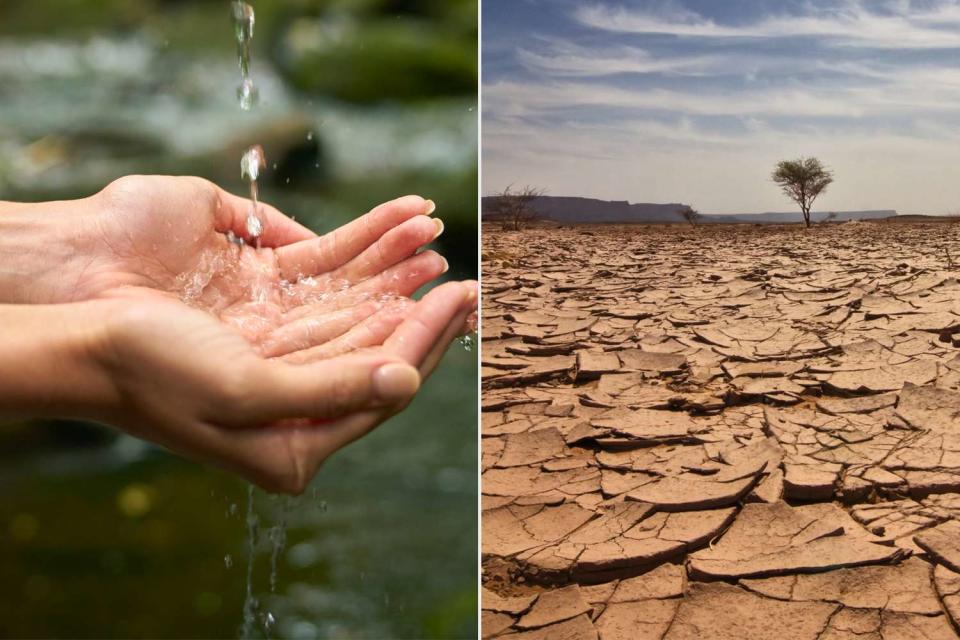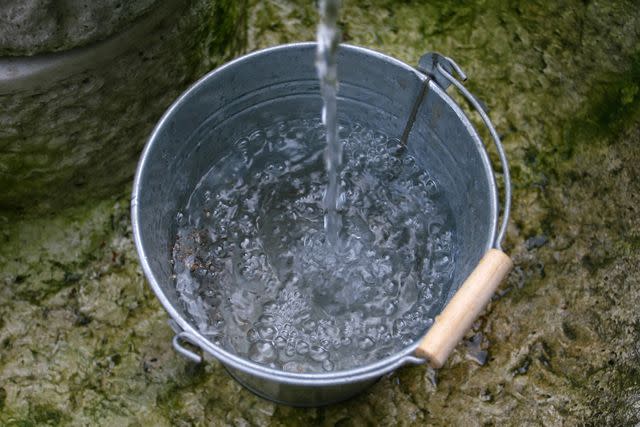Scientists Have Invented a Machine That Can Turn Air into Water
A prototype successfully pulled liters of water from dry air — a promising advancement as water scarcity becomes an increasing global problem

Getty
Stock image of water in a person's hands; Stock image of an area impacted by drought.Scientists have come up with a machine that, in layman's terms, can effectively turn air into water — by pulling moisture from the environment, even in dry conditions.
Sorption-based atmospheric water harvesting (SAWH) is a field of engineering that looks at ways to resolve water scarcity, which “remains a grand challenge across the globe,” a study published in ACS Energy Letters said.
Examples of similar engineering include fog harvesters and water harvesters, which collect moisture from the air.
However, those current models are “often not applicable in an arid environment,” so scientists from the Massachusetts Institute of Technology invented a new model that “has demonstrated great potential to provide fresh water under a wide range of climate conditions.”

Getty
Stock image of water pouring into a bucket.Related: Cancer-Causing 'Forever Chemicals' Found in Nearly Half of U.S. Tap Water, Study Finds
A prototype based on the model, the study said, promises “5.826 liters” of water per day, but admits “this comes at a substantial energy,“ and suggested using “high-density waste heat” — basically, the warmth given off by a machine when it’s operating — as a source of energy.
The result of the study could be a “reliable and effective source of potable water production that can be integrated into various existing applications, such as in buildings, industrial plants, and transportation with suitable high-density waste heat."
The World Wildlife Fund says that “some 1.1 billion people worldwide lack access to water, and a total of 2.7 billion find water scarce for at least one month of the year.”
Never miss a story — sign up for PEOPLE's free daily newsletter to stay up-to-date on the best of what PEOPLE has to offer, from celebrity news to compelling human interest stories.
According to the United Nations, the situation is not going to get better, noting that “climate change is making water scarcity worse. The impacts of a changing climate are making water more unpredictable.”
UNICEF estimates that “some 700 million people could be displaced by intense water scarcity by 2030.”
The growing scarcity has led to projects like the new atmospheric water harvesting, as well as The Grey Water Project, launched by a Stanford University college student. The project looks for solutions to recycle “grey water” — the non-potable water from sinks and showers — to be used for toilets and watering plants.
The study, meanwhile, sees its design as a potential solution, pointing out “there is about 1300 trillion liters of freshwater in the atmosphere that could be readily harvested without relying on the existing liquid water supply.”
For more People news, make sure to sign up for our newsletter!
Read the original article on People.

 Yahoo News
Yahoo News 
